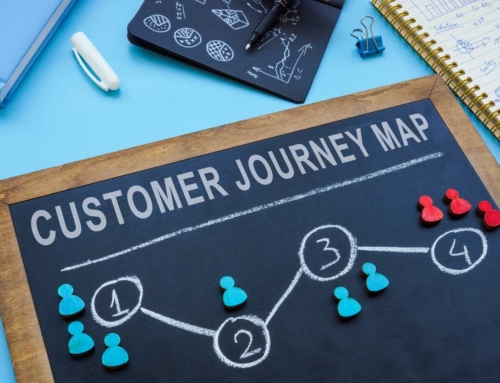Sales Call Funnel: What It Is and How to Use It
Getting customers to buy your products and services is no easy task in today’s competitive marketplace. You’ll need to prime customers for each stage of the sales process, leading them to purchase. The secret to doing this lies in creating an effective sales call funnel.
Creating a sales funnel for your business can help you automate your sales processes, gain key insights about your customers, and grow your sales revenue. This guide highlights everything you need to know about sales call funnels and how you can build one for your business.
What Is a Sales Call Funnel?
The sales funnel, a fundamental marketing concept, represents the customer journey as they navigate your company’s unique sales process, from awareness to purchase. This model uses a funnel showing many prospective customers at the beginning of every sale. The farther your customers move through the sales stages, the stronger their desire to buy from you.
Intentionally crafted sales funnels can help companies grow their revenues. By getting an overview of the customer journey, businesses identify room for improvement in the sales process, helping them craft the right strategies to address customer needs and move them through the funnel.
Despite this, an industry survey revealed that 68% of companies have not identified and measured their sales funnels, and 79% of leads don’t convert into sales. Investing time developing a sales call funnel for your company can help you maximize leads, gain a competitive edge, and hit your sales goals.
Why Is a Sales Funnel Important?
A well-crafted sales funnel provides vital insights into customers’ knowledge and interest in your products and services throughout their buying journey. By tracking this process carefully, your business can identify the best way to approach each lead. Getting the timing and messaging right can reduce lost prospects because of hard selling too early or providing too much information.
Effective sales funnels also provide the following benefits for businesses:
- Customer Acquisition: The goal of the sales funnel is to move the organization’s target market through the sales process and turn them into paying customers.
- Effective Monitoring: A sales funnel helps organizations assess how well each stage of the funnel is performing and what adjustments they need to make to ensure efficient use of time and resources.
- Better Focus: As customers move down the sales funnel, getting closer to making a purchase, the company gets a clear overview of its warm leads. This information shows them where to focus their conversion efforts. Conversely, companies can use the data to weed out unqualified prospects by requiring potential clients to go through a series of stages before purchase.
Companies can leverage the power of data analytics, telemarketing solutions, and other call center technologies to guide customers through the sales funnel. Outsourcing these services presents a cost-effective opportunity for businesses to access the latest technology without straining their resources and budgets.
How It Works: The Stages of the Sales Funnel
Customers pass through the different stages of your sales call funnel, from when they first learn of your products and services until they decide to purchase. Each stage represents the customer’s mindset, requiring a different sales approach.
While sales funnel stages can vary depending on your business, they are generally divided into these four categories:
1. Awareness
Early in the customer journey, your potential customers may have a problem or concern they want to solve and are researching solutions. This first stage is called “awareness” because it’s when your clients become aware of your business and its solutions. They might have come from your lead generation efforts or a Google search.
2. Interest
At this sales funnel stage, the customer is interested enough to learn more about your business and the solutions you offer. Your business must make prospects realize that your solution is the best answer to their problem.
Rather than hard-selling, the sales team can focus on informing and educating them to show expertise and industry knowledge. Guides, content, blogs, and other relevant information should be easily accessible.
3. Decision
Customers are ready to buy and may be considering a few different options before purchasing. They will usually compare pricing, service, and other relevant factors in their decision-making.
Your company should provide the best offer to encourage those at this stage to buy. This may entail providing them with an exclusive discount, free shipping, or a bonus product.
4. Action
The previous stages of the sales funnel conclude with this final step. At this stage, the customer has decided whether to buy the product. If your customer decides not to proceed with the purchase, the company can still set up marketing campaigns to nurture them into becoming paying customers.
For successful sales, the next goal is customer retention. Marketing content and efforts can aid in building brand loyalty. For example, you might create a rewards program or invite them to sign up for a newsletter.
How to Build an Effective Sales Call Funnel: Best Practices
Explore some of the best practices businesses can follow to create an effective sales call funnel.
1. Understand Your Customers
Understanding your target market is necessary for creating a sales call funnel that converts. As you seek to better understand members of the target audience, consider the following questions:
- What are their needs?
- What pain points do they share?
- How can your products and services meet those needs?
Once you’ve figured this out, you can create content and strategies that speak to your target audience. These insights can also help you create buyer personas to personalize the customer experience. To get this information, you can work with reliable third-party companies like ROI CX Solutions to conduct surveys and glean valuable insights.
2. Bring Customers to Your Funnel
Bring people to your funnel using lead magnets, such as an offer that can capture their email address, free downloadable resources, or social media ads. You can hire third-party companies that are experts in lead generation. Companies like ROI CX Solutions use qualification checklists to ensure lead quality, saving organizations a lot of time.
Here are the best ways to capture your target market’s attention:
- Telemarketing: uses cold calling or emails to reach out to people or businesses who might be interested in your offerings.
- Advertisements: paid traffic on multiple platforms, such as social media or websites.
- Organic marketing efforts: sharing organic content, such as videos, blogs, or infographics, on your website or social media platforms.
3. Establish a Landing Page
After you capture your audience’s attention, you need to direct them somewhere. Building a landing page is one of the best ways to do this.
A landing page is a website page featuring a call to action that encourages prospects to engage. Each page needs to capture your audience’s information and provide details about what your customers need to do next.
4. Nurture Leads
After the prospect has provided their contact information, the next step is to nurture them by providing more valuable content. Your company can send them more information about your products and services via email or conduct a call to answer questions and provide insights.
Staying in touch with prospects keeps your business at the top of their minds. The goal of lead nurturing is to remove as much friction as possible, helping to move them closer to the last stage of the sales funnel.
 5. Close the Deal
5. Close the Deal
Prospects become customers when they make purchases. But regardless of the result, it’s essential to keep the communication going.
For successful conversions, focus on building brand loyalty. For lost sales, continue the nurturing process and reach out regularly. According to Hubspot, getting an initial conversation with a new prospect takes between six and eight touches.
6. Analyze and Optimize
The real work begins after creating your sales call funnel. You must continuously improve your sales funnel to keep up with changing customer demands and market competition.
Focus on the stages where your prospects move from one phase to the next. Test every offer and compare the results. For example, you might discover that discount codes are more effective than free shipping.
Last, track important KPIs to help your business analyze the effectiveness of your sales process. Some examples include customer retention rates, average order value, conversion rates, and total revenues. With this information, you can maximize the strategies that work for your business and save time and resources.
Create Sales Call Funnels That Convert with the Help of ROI CX Solutions
With so much to consider, it’s challenging to craft a sales funnel that can win clients. At ROI CX Solutions, we help businesses like yours in this endeavor. We offer world-class call center solutions, from telemarketing services to lead generation, to help you grow your customer base and increase sales revenue.
Reach out to learn more about our services or request a free quote today!




![How To Get Leads for Insurance Sales [6 Best Methods]](https://roicallcentersolutions.com/wp-content/uploads/2021/06/iStock-1207861941-500x383.jpg)

